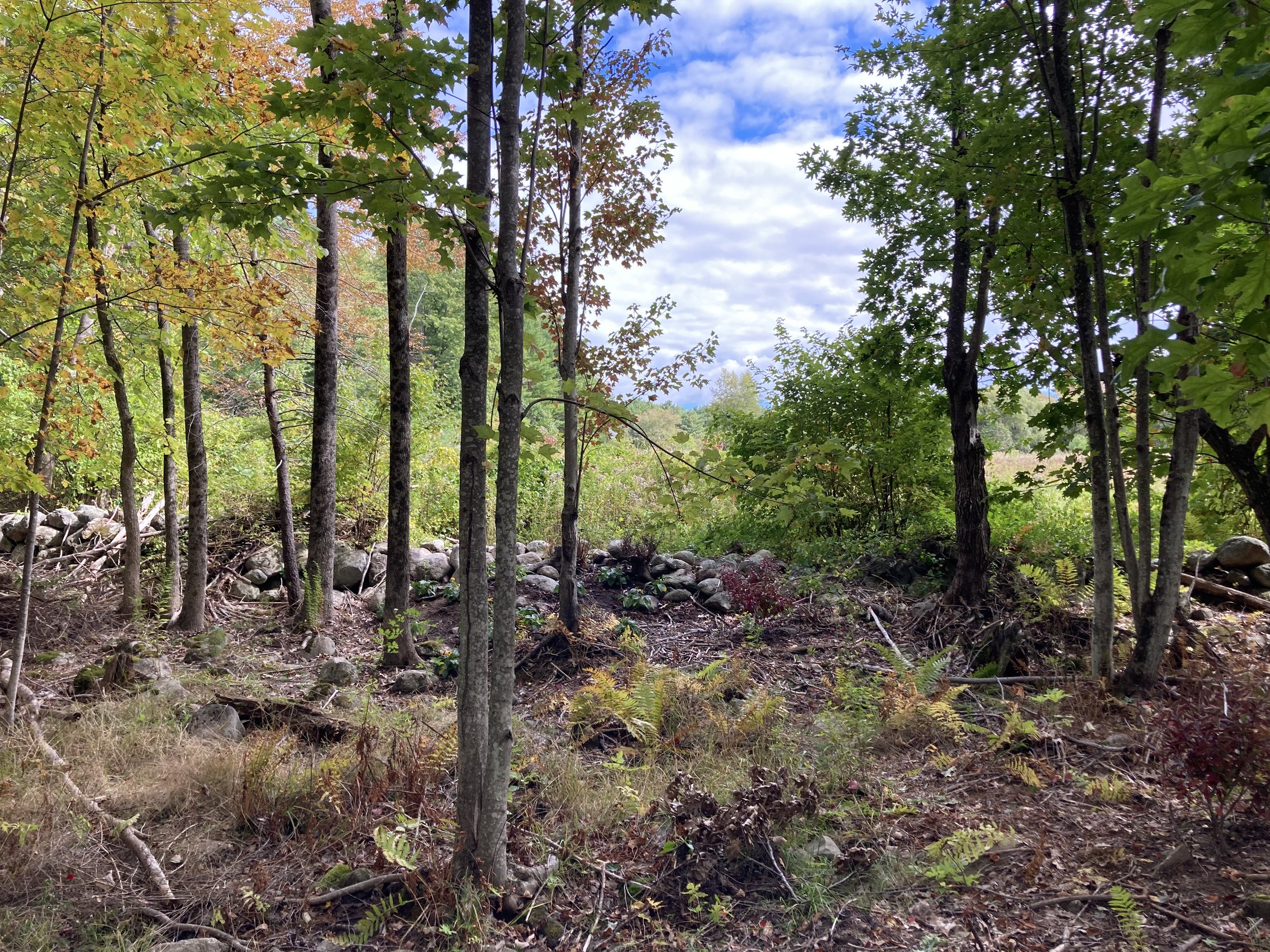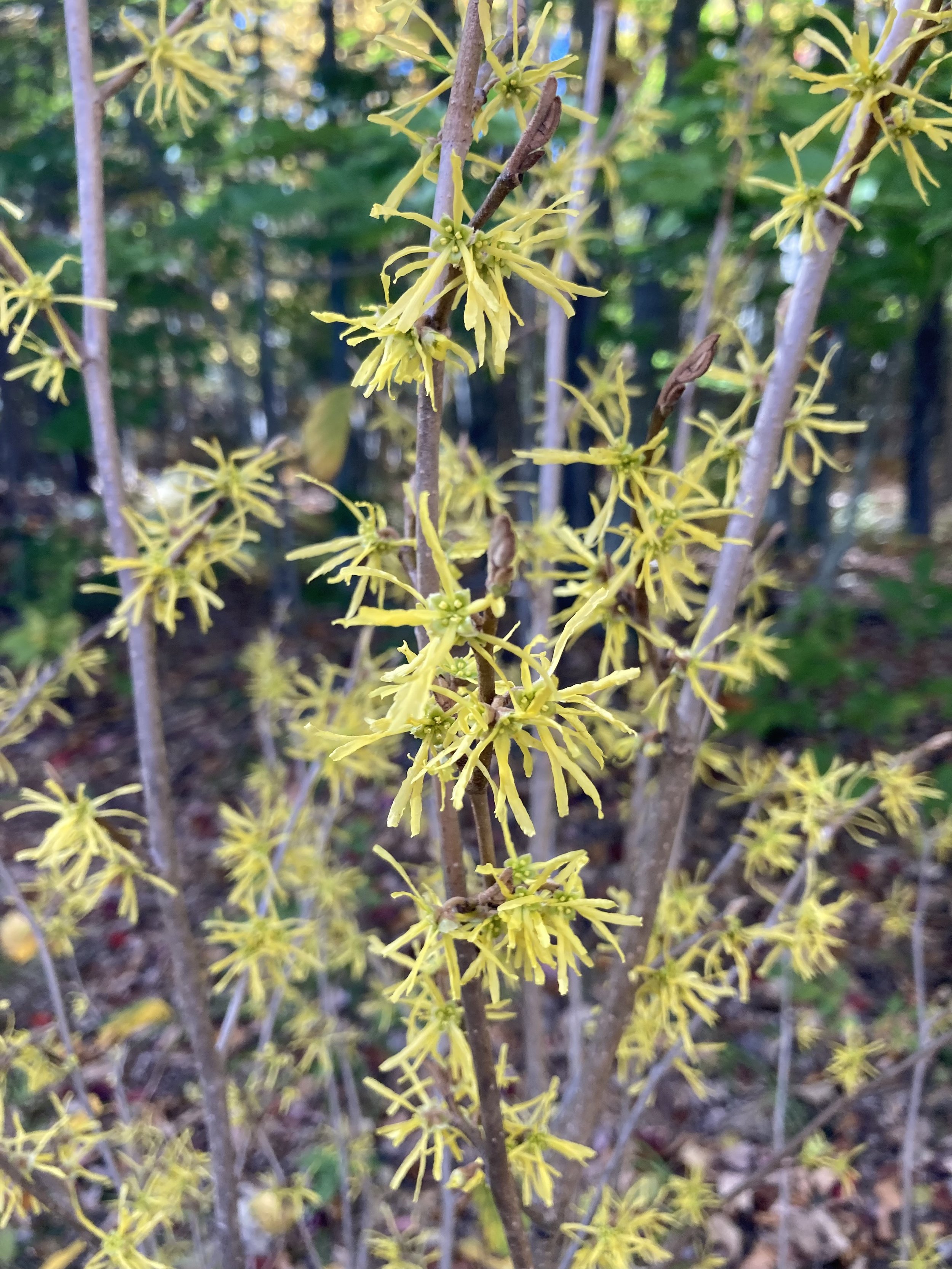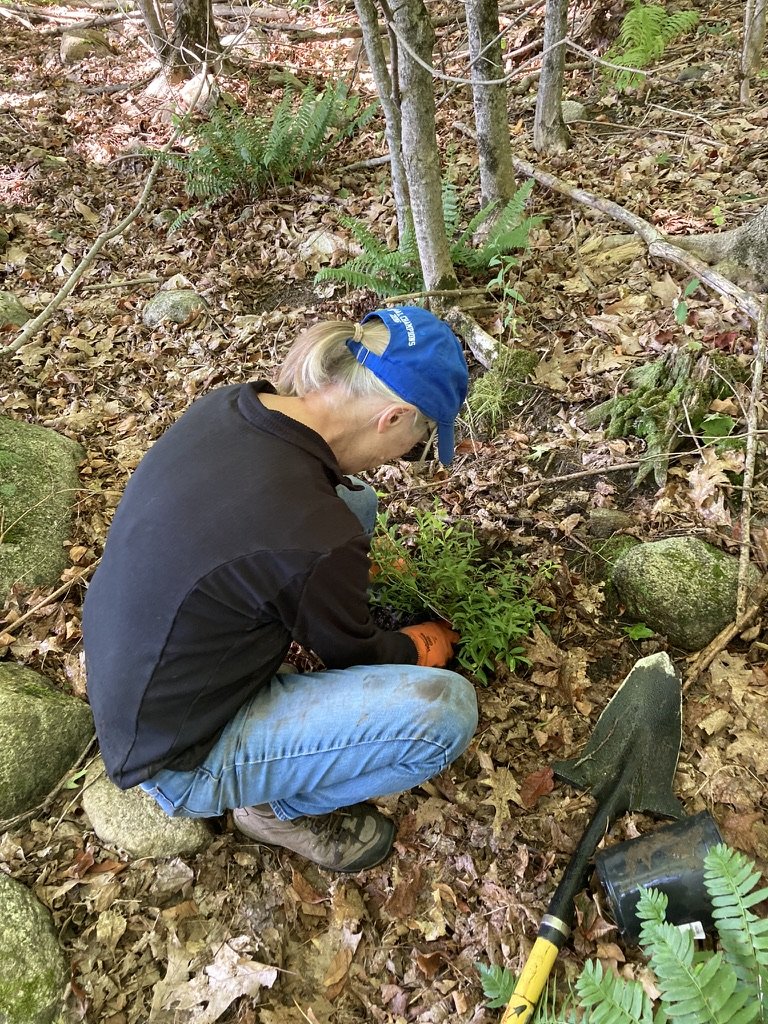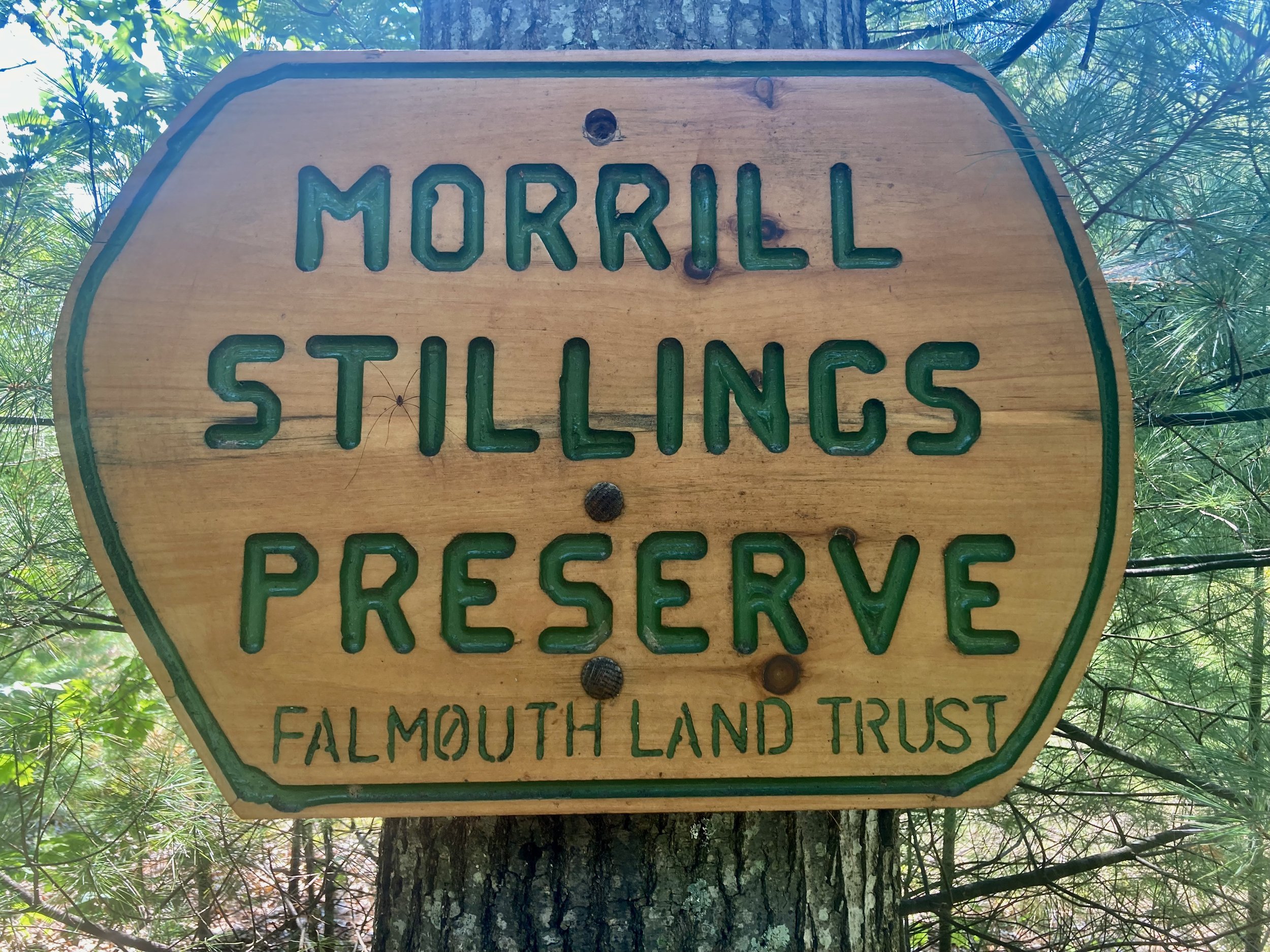
Morrill-stillings bird sanctuary
Click on map to enlarge
Click this link for an interactive google map of Morrill-Stillings Bird Sanctuary’s trails!
Trail Distance and Description: 1.25 mile loop; trails are often rooty and rocky and contain sections of narrow bridging over wet areas
Dogs: Not allowed
Bikes: Not allowed
GPS Address: 18 Babbidge Rd, Falmouth
Parking: Grass field with approximately 8 spaces; lot is not plowed in the winter
Additional Information
Ownership: Falmouth Land Trust
Year Protected: 2018
Acreage: ~ 27
Property Uses: Bird watching, trail walking, nature study, and hunting are all allowed (archery only). No pets and no bikes.
Additional Directions: From I-95 take exit 53 and turn left onto Gray Rd (Rte 100/26). Continue one mile and turn left onto Mountain Rd. Continue on Mountain Rd for two miles, then turn right onto Blackstrap Rd. Continue on Blackstrap Rd for 1.5 miles and turn left onto Babbidge Rd. The property entrance is less than ¼ mile down on the left, just before 20 Babbidge Rd.
There are approximately 8 parking spaces in a grass field at the property entrance. Additional parking can be found at Blackstrap Hill Community Forest (492 Blackstrap Rd), a quarter-mile from the entrance to the property. 20 Babbidge Rd is a residential home that can be used to aid in finding the entrance of Morrill-Stillings.
History: The Morrill Farm is one of the oldest farms in Falmouth. Deeds indicate the land was originally purchased in the early 1700s by Samuel Waldo, a wealthy king pine trader who bought masts in the region for the King of England. In 1798, John Morrill Jr purchased the property and built a house. His family, and eventually his daughters, farmed it well into the 1800s. From the 1800s -1900s, the farm was a productive place for agriculture as indicated by the inspiring twenty foot wide stone wall surrounding much of the 15- acre field. The farm had livestock, apple and pear trees; and grew peonies that were sold to the Boston and New York markets. Based on aerial photography, the property appears to have had an orchard in the field west of the current residence as early as 1940 and as late as 1987.
Habitat: Emergent wetland, spring, mixed second growth forest, meadow, bog, blueberry field.



